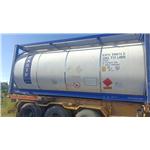An acetate ester:Propyl acetate
General description
Propyl acetate is an acetate ester obtained by the formal condensation of acetic acid with propanol. It has a role as a fragrance and a plant metabolite. It derives from a propan-1-ol.N-propyl acetate appears as a clear colorless liquid with a pleasant odor. Flash point 58°F. Less dense than water, Vapors are heavier than air.
Figure1 the chemical structure of propyl acetate
Application
Propyl acetate can be used as food flavors, cosmetic flavors;it can also be used in spray paint, plastic and organic synthesis, etc. It is a mild and fast-drying agent, mainly used as elastic plate and gravure printing ink; also used as nitrocellulose, chlorinated cellulose Solvents for natural resins and artificial resins such as rubber and heat-reactive phenolic plastics; can also be used as qualitative and quantitative standard substances in gas chromatography.[1]
Ethyl acetate, propyl acetate, ethanol and water systems are azeotropic with each other, and there is ternary azeotropy, which is difficult to be separated by ordinary distillation. The separation process of ethyl acetate, propyl acetate, ethanol and water system by extractive distillation is simulated by Aspenplus. The thermodynamic model is UNIFAC. The extractive distillation experiment is carried out on the system. The thermodynamic model is modified by using the experimental data of extractive distillation to make the simulated data consistent with the experimental data. Ethyl acetate and propyl acetate are important organic chemicals in industry. They have good compatibility and special fragrance. They are widely used in coatings, printing and dyeing, medicine, flavor and paper making industries [1-3]. At present, the production of ethyl acetate and propyl acetate is basically the crude product obtained from acetic acid, ethanol, acetic acid and propanol with high purity through reactive distillation process [4-6], and then the product with mass fraction greater than 99% is obtained through multi tower separation. The disadvantage of this process is that high purity raw materials lead to high production cost. If the mixture of ethanol and propanol with lower price is used as raw material, the production cost can be reduced by 8% ~ 10%[1].
Safety
Propyl acetate is highly flammable, easily irritating the eyes, prolonged exposure may cause dry and cracked skin, and vapors may cause drowsiness and dizziness.The vapor of propyl acetate and air form an explosive mixture, which can cause combustion and explosion in case of open fire and high heat energy. Propyl acetate can react strongly with oxidant, and its vapor is heavier than air, and can diffuse to a relatively far place at a lower place, and it will cause flashback when encountering a fire source. In case of high heat, the internal pressure of the container will increase, and there is a danger of cracking and explosion.
Synthesis
Propyl acetate is a widely used organic chemical with fruit flavor. There are many deficiencies in the traditional production methods. With the enhancement of environmental protection awareness, it has been committed to looking for more environmentally friendly, efficient and cheap catalysts to replace traditional catalysts. The catalysts that have achieved good results include inorganic salts, solid superacids, heteropoly acid salts [1] and rare earth oxides [2]. These catalysts have many advantages, but there are also shortcomings, such as the preservation and reuse of inorganic salt catalysts and the preparation of solid superacid catalysts. Cerium sulfate is a solid inorganic salt catalyst, which can be widely used in organic synthesis as L-acid [3]. Its catalytic effect on esterification has been explored in many organic synthesis reactions, with high catalytic activity. Diatomite-supported sulfate catalyst to catalyze the synthesis of propyl acetate has the advantages of less catalyst dosage, short reaction time, high product yield, and the catalyst can be reused. Therefore, it has great practical value and broad application prospects.[1] Using ceric sulfate as the catalyst,glacial acetic acid and n-propyl alcohol as raw materials and cyclohexane as water carrying agent,propyl acetate was synthesized by esterification reaction. The influence of molar ratio of n-propyl alcohol to glacial acetic acid,reaction time,ceric sulfate dosage and repeated use times on the esterification rate was investigated. The optimal condition of the esterification reaction was determined by orthogonal tests and single factor experiments. The results showed that the esterification rate of about 99% was attained under the optimal condition as follows: glacial acetic acid amount 0.1 mol,molar ratio of n-propyl alcohol to glacial acetic acid 1.5,ceric sulfate dosage 1.1 g and reaction time 2.0 h. The catalyst had the features of high activity,simple operation and little pollution[2].
References
1.Study on the separation of ethyl acetate, propyl acetate, ethanol and water by extractive distillation。
2.Zi Junfeng, song Shaotang: synthesis of Propyl Acetate Catalyzed by cerium sulfate, industrial catalysis, 2015, issue 02, pages 156-158.
3.Zi Junfeng. Research progress on catalytic synthesis of propyl acetate [J]. Journal of Xuchang University, 2006(02):50-51.
);You may like
See also
Lastest Price from Propyl acetate manufacturers

US $0.00/kg2023-12-05
- CAS:
- 109-60-4
- Min. Order:
- 20000kg
- Purity:
- 99.9%
- Supply Ability:
- 10000ton

US $9.10/KG2023-03-06
- CAS:
- 109-60-4
- Min. Order:
- 1KG
- Purity:
- 99%
- Supply Ability:
- 10 ton
